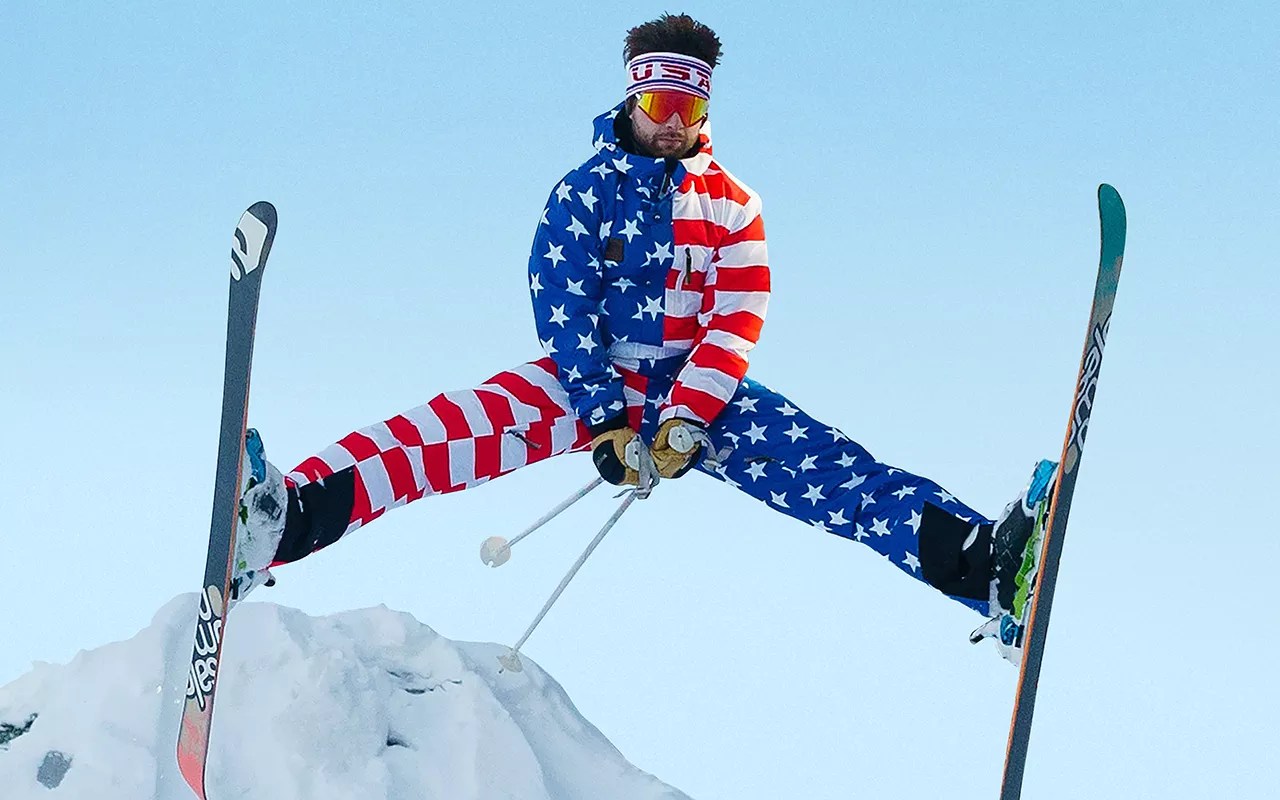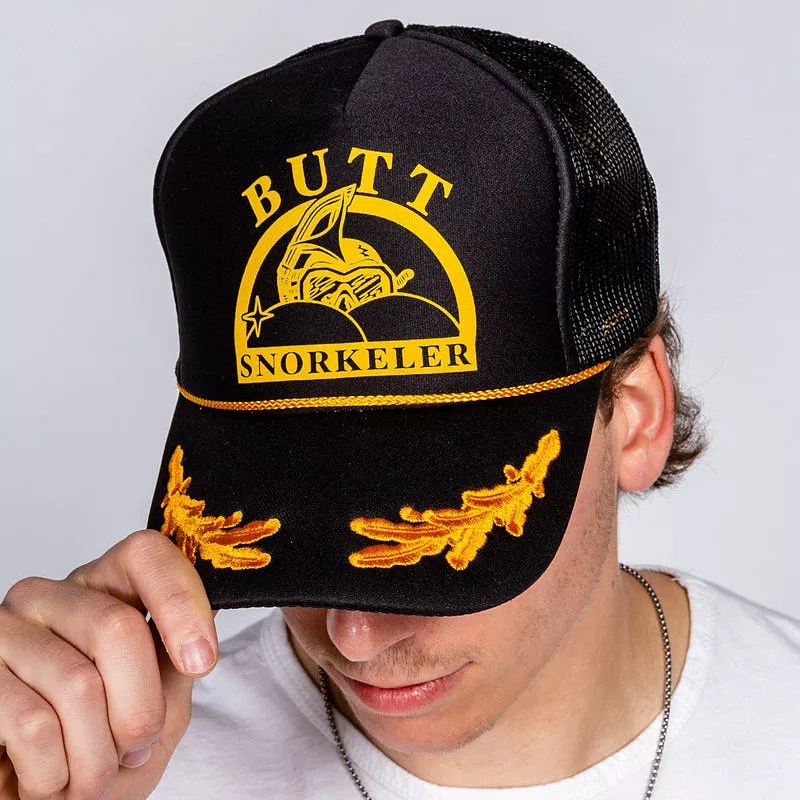
Shinesty

Audio By Carbonatix
You’re sitting in a bar, forget that it’s St. Patrick’s Day – “amateur night,” as you’ve always thought of it – and in walks a gaggle of obnoxious twenty-somethings in matching, garish, shamrock-emblazoned Hawaiian shirts. You settle up.
It’s Christmas, you’re at a company holiday party, and your buttoned-up boss, in a transparent attempt to show you his “fun” side, dons a hideous suit with mistletoe patterns stamped all over, including the crotch. You’re not comfortable with the implication.
It’s Valentine’s Day, and your girlfriend gives you a pair of novelty underpants with a suggestive image of whipped cream with a cherry on top imprinted over the only part of the enterprise where that makes sense. You hope to never wear them, but you probably will.
“My God,” you ask yourself, “where does all of this come from?”
Turns out there’s a good chance these oft-obnoxious articles of clothing came from Boulder-born-and-based Shinesty, whose mission “to force the world to take itself less seriously” has been taken very seriously by two million customers across the country.

Shinesty founder Chris White knows when to suit up.
Shinesty
Colorado’s no stranger to setting fashion trends with staying power, of course. Boulder County is also home to Crocs, the functional footwear everybody just loves to hate. Denver’s Jack A. Weil, founder of Rockmount Ranch Wear, was the proud inventor of the now-iconic snap-button shirt, and also laid claim to the first mass-produced bolo ties. None other than John B. Stetson whipped together a hat while panning for gold and sold his first “Boss of the Plains” creation in Central City.
Like Stetson, Shinesty co-founder Chris White didn’t set out to create, well, anything. White came to Colorado in 2011 for decidedly suit-and-tie graduate studies in business and law at the University of Colorado Boulder. He paid his way through his undergraduate years studying religion at Indiana’s DePauw University, selling everything from Cutco knives to vacation packages to custom clothing for fraternities, sororities and church groups.
Arriving in Colorado with at least a passing interest in apparel, White was struck by the rich, often-weird vintage garb he’d find while exploring the state. “There’s an amazing vintage market in Colorado, with all the ski towns, especially – and not just the thrift shops,” he recalls. “We’d go to these estate sales in mountain towns where someone from New York had this Aspen house and hadn’t been there in twenty years. We enjoyed going on the hunt and finding that outrageous gem that you knew you could wear to a friend’s event, or to a party, or to a bar crawl, or to whatever it was, and people would be like, ‘Whoa, where’d you get that thing?'”
Like any MBA student worth his salt, White figured he could monetize those whoa moments. In mid-2014, he and friend Jens Nicolaysen, now the company’s chief marketing officer, started Shinesty (pronounced like “dynasty,” and inspired by White’s college friends muttering “Shine on, man” as they encouraged each other to swill more moonshine).
“We hired people to buy for us in vintage shops all over the country where we thought there’d be good inventory,” White recalls. “Think about college towns, ski towns, California destinations – random places where you’d find those unique gems.”
“Hopefully, we’re not putting things into the world that only last an average of 33 days in someone’s closet before they get thrown away.”
Throughout 2014, under the tagline “Vintage clothing that will make your life way better,” the Shinesty team members would mine estate sales and thrift shops the country over, post finds on their website and ship them off to happy buyers. Selling their own “good” taste brought in a few thousand dollars a month: moonshine money, if nothing else. Still, White suspected the idea had legs – and he wasn’t alone.
Around Christmastime, TV’s Al Roker discovered Shinesty.com, and he scrolled through the website on air, long enough for people to notice. “That caused a massive spike of traffic,” White recalls. “We sold $100,000 worth of product, and then I realized, ‘Oh, I don’t think we have $100,000 worth of product.’ We had to call 1,000 people and tell them that they weren’t going to get any of the Christmas product that they thought was cool and awesome.'”
The spike gave White a jolt of confidence in his idea – but for the concept to work well enough to let him skip the bar exam, it needed to scale. Thrifting had staggering margins, but it was time- and labor-intensive, and the novelty clothing trade tended to be seasonal: ugly sweaters for Christmas; brazen red, white and blue finds for July 4; all the green you could dream of for St. Patrick’s Day. In 2015, to sustain its momentum, the company started producing its own merchandise. With 70 percent growth year over year, White thought he could make the case to investors to fund everything Shinesty needed to pivot from online vintage reseller to bona fide clothing brand, complete with design teams, supply chains and production runs.

Christmas proved a big boost for the business.
Shinesty
Still, it was a hard sell at first. “I would say we probably got turned down by over 100 investors,” White recalls. “We were constantly turned down, year after year. They’d tell us to come back when we hit a certain metric. And we would come back and they’d still waver.”
In contrast, customers took a shine to Shinesty right away, and by 2016, the company’s original designs were doing well enough that investors were beginning to get interested. And by 2018? Shinesty no longer sold any vintage finds whatsoever.
The company won’t share its current financials; there are a surprising number of competitors that transact in whimsy. But some numbers tell the story: Shinesty employs about 100 people, mostly in Colorado. It sends out “close to a million” catalogues a year, many of which elicit angry letters from parents who call the damn things pornographic. The company proudly publishes those responses as marketing collateral.
And then there are all those products that keep popping up across your feed and in your daily life. Ideas come together in a collaborative, writers’-room format, though the Harvard Lampoon this is not: Many bestsellers have been suggested by customer-service reps and box packers in the distribution center.
Novelty suits for theme parties, as well as functional, retro-inspired ski suits in glowing neon. For men, underwear with an elephant trunk gracing the business area, but also sensible pairs in black, blue and gray. A woman can buy some faux-fur underwear to surprise her significant other next Valentine’s Day and also snag family-friendly matching pajamas for the rest of the year. And if you’re looking for a face mask with Anthony Fauci’s face on it, Shinesty has just what the doctor ordered.
But you do need to be careful when browsing Shinesty’s website; it’s easy to see why its catalogues are commonly confused with porn. The marketing copy is as cheeky as it is cheek-dependent: No matter where you click, attractive models grace the screen in the company’s skimpiest offerings. Searching for the single-most ridiculous item for sale, you might come across a nautical captain’s hat that says “Butt Snorkeler” across the front – and ads for it will subsequently chase you like Ahab around the entire internet.

There’s a whole line of Butt Snorkeler items.
Shinesty
Many of these items might be considered novelties, but White hopes that they also wind up as vintage finds some day. Many already have: eBay listings abound for past bestsellers, many advertised as “like new” or “with tags.” (Thankfully, there doesn’t appear to be any “pre-owned” underwear.) “The biggest thing is not creating things that wear out and have to get thrown away,” White says. “For an apparel company, you’re inherently creating, you’re putting things into the world that may end up in a landfill. Hopefully, we’re not putting things into the world that only last an average of 33 days in someone’s closet before they get thrown away. So that’s putting quality into the product. Our underwear is made out of micromodal, which isn’t something we talk about often, but it is a sustainable fabric. Our ski suits are made out of recycled polyester.”
Sustainability matters when sustaining Shinesty clientele. “The bigger the business gets, we do have the luxury of being able to do some of those things, like using recycled cardboard,” White says. “Obviously, we have to be at a level where we have profits so that we can make those investments; I think that’s important for customers but also for employees…for attracting talent. The people who care about that generally want to work at places that are at least conscious of it.”
For all its irreverence, Shinesty is very much a real company, complete with concerns about sustainability and payroll processing and licensing deals and litigation (it recently sued a competitor for allegedly infringing upon its “Ball Hammock” trademark, a sentence no professor in journalism hints that you might have to type one day). That leads to some tension for White as CEO.
“A key employee quits, or we don’t have enough people to work to ship out packages – that has happened constantly,” he says. “But we have to relax. If we’re not having fun, then our customers will be able to tell.”
That earnest pursuit of fun, as much as it might seem like a glib marketing tagline, seems to appeal to just about everyone. According to Shinesty’s demographic and psychographic data, the company has as many liberal-leaning customers under the age of 24 as it does six-figure-earning fifty-somethings who reliably vote Republican.

Shinesty is always ready for a holiday.
Shinesty
As for those “what-is-this-fresh-hell” moments when you encounter a Shinesty product in the wild? They’re very much the point. Sure, Colorado’s fashion heritage has been rooted in utility: Crocs perfected the slip-on, a snap-button shirt won’t tear when it catches on a fence at the ranch, and a Stetson hat has always been very good at keeping the elements out of your eyes. But we’re human beings, not human doings, as White points out. “We’re social creatures, and we like laughing and smiling, and that’s good for the world,” he says. “No matter who you voted for or what god you believe in or who you love, you can still think that a dick joke is funny.”
Consider it a radical act of national unity, then: The next time you see a raucous group of seemingly too-young-to-be-here bar crawlers in stupid matching attire, resist the temptation to roll your eyes. Order another drink. Laugh at them. Let them laugh at you. Tell your boss you like his special outfit, as much as you may hate it. Save that underwear you got for the next Valentine’s Day, and, yes, the ones made of fake fur, too.
After all, we’re supposed to enjoy these moments of whimsy as much as a Colorado cowboy enjoys his hat – even if it doesn’t say “Butt Snorkeler.”